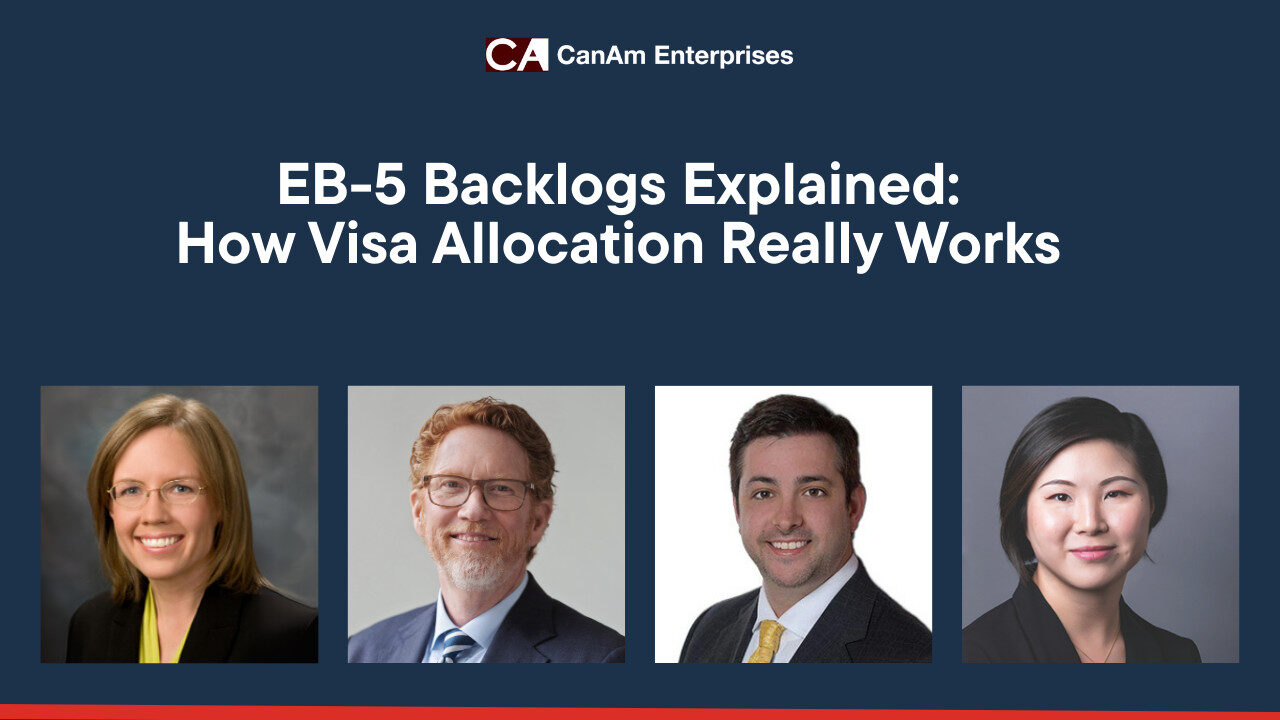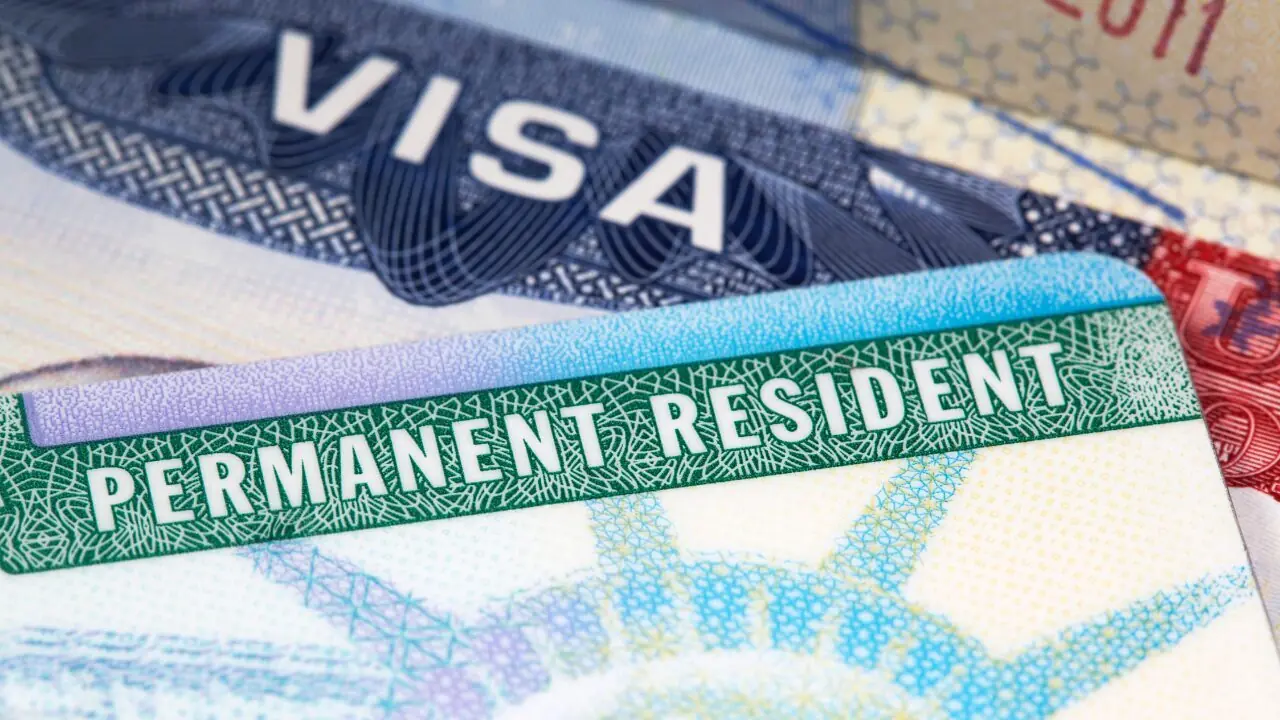Understanding Retrogression in China and India
In the complex world of EB-5 immigration, few words trigger as much anxiety as “retrogression.” For investors from high-demand countries like China and India, the April 2025 Visa Bulletin delivered exactly that—a sharp and sudden step backward in visa eligibility. And unlike the premature warning that rattled reserved-category investors back in January, this time, the threat was real.
In Part 2 of CanAm’s Visa Bulletin webinar recap, we explore what retrogression actually is, why it happened now for China and India, how the State Department mishandled the warning signs, and why the pain may be short-lived—even as the volatility continues.
A Quick Primer: What Is Retrogression?
Retrogression occurs when the U.S. Department of State moves a visa category’s final action date backward—meaning that only investors with earlier priority dates can move forward with the green card process. In EB-5, that can suddenly block eligible investors from scheduling visa interviews or adjusting their status—even after years of waiting.
In the June 2025 Visa Bulletin, final action dates for unreserved EB-5 visas retrogressed for both China and India. Only investors whose I-526 petitions were filed before January 22, 2014 (China) or May 1, 2019 (India) were eligible to proceed. Everyone else was forced to wait.
This was a seismic shift—and one that caught many off guard.
No Warning, No Chart B: What Went Wrong?
According to Charlie Oppenheim, former Chief of the Visa Control Office at the U.S. Department of State, the April retrogression should not have been a surprise—but it was.
“In an ideal world,” Oppenheim said during the webinar, “the State Department should have placed a note in the [Visa Bulletin]—at least one to two months in advance—saying that increased demand is going to require the imposition of retrogression for China and India. They did not do that, which to me means they were caught totally off guard.”
This lack of early signaling was a key misstep. As Pete Calabrese, CEO of CanAm Investor Services, noted, “There were no Chart B dates to give investors a heads-up, no language in February or March to foreshadow this shift. It blindsided a lot of people.”
What Triggered the Retrogression?
The answer lies in visa math—and a miscalculation about rest-of-world demand.
Let’s say the annual limit for unreserved EB-5 visas is 11,000. The State Department expected the “rest of world” (i.e., countries other than China and India) to use about 4,000 of those visas. That would have left roughly 7,000 for China and India, split evenly or by demand.
But by the time the April bulletin was being finalized, it became clear that the rest of the world was on track to use far more than 4,000 visas—closer to the full 11,000. That meant China and India were at risk of exceeding their per-country caps, so the State Department hit the brakes by pushing final action dates backward.
As Oppenheim put it, “They realized the rest of world was going to use far more than 4,000 numbers. And therefore, they had to retrogress both the China and India dates… so that they could preserve numbers for the rest of the world.”
The Human Cost: A Hard Hit for Families
For EB-5 investors from China and India, the impact was immediate and deeply personal. “Consular interviews were canceled. Adjustment of status cases that were ready to go got paused. Families who thought they were near the finish line were told to wait again,” said Joey Barnett, Partner at WR Immigration.
While retrogression may be a bureaucratic term, it carries real consequences: delays in work authorization, setbacks in relocation plans, and prolonged uncertainty for children aging out or families facing major life decisions.
As Barnett acknowledged, “This was disheartening for a lot of investors. It’s hard to hear that it’s ‘just temporary’ when you’ve already waited so long.”
A Temporary Setback, Not a Permanent Wall
Despite the blow, all three experts were quick to underscore that this retrogression is likely a short-term correction—not a long-term barrier.
“This is a temporary retrogression,” Oppenheim explained. “It was strictly to limit the use of numbers for the remainder of the current fiscal year. But it has nothing to do with the numbers that will be available in the coming year.”
In fact, the very act of retrogressing now could help stabilize the system moving forward. By limiting China and India’s usage this year, the State Department creates breathing room to clear the rest-of-world backlog—potentially paving the way for faster movement in 2026.
“If the consulates process the rest-of-world cases efficiently in the next few months, that could eliminate most of that pending demand,” Barnett said. “That would free up more numbers for China and India starting October 1, when the new fiscal year begins.”
The Outlook for October and Beyond
So what does this mean for the next Visa Bulletin?
According to Oppenheim, there’s reason for cautious optimism. “For October, they should make an attempt to recover to the latest established dates,” he said. “I do not believe they will go back to July 2016 for China, but I wouldn’t be surprised if it gets back to late 2015. For India, maybe back to late 2021 or even a full recovery.”
That level of bounce-back would be significant—especially for investors who suddenly find themselves frozen after years of progress.
But that rebound won’t be linear. “We’re going to see some ping-ponging,” Barnett warned. “These dates may move forward, then backward again, depending on how demand plays out and how quickly USCIS and the consulates move through their caseloads.”
Strategic Considerations for Investors
For investors from China and India in the unreserved category, this moment offers both challenge and opportunity:
- If you were lucky enough to file your I-526 early enough to qualify under the current dates, you’re in a rare window—act quickly to file your adjustment or prepare for your consular interview.
- If you’re affected by retrogression, don’t lose hope. The dates are expected to advance again in FY2026. Stay in close contact with your attorney, monitor each month’s Visa Bulletin, and be prepared to move when your date becomes current again.
- If you haven’t yet invested, consider the reserved visa categories, which remain current and offer concurrent filing benefits that unreserved applicants currently lack.
As Calabrese emphasized in Part 1 of this series, “Every visa bulletin is a new roll of the dice. Today’s opportunity might be gone tomorrow.”
The Bigger Picture: EB-5 Is Growing, and So Are the Growing Pains
What’s clear from this episode is that EB-5 demand is back—and broader than ever. In the past, visa allocation challenges were largely concentrated among Chinese investors. Today, they involve India and the rest of the world as well.
That’s a good thing in terms of program health and economic impact. But it also means that visa numbers will be tested, and careful forecasting will become more important.
The State Department’s failure to anticipate the unreserved surge this year was a miss—but one that hopefully won’t be repeated.
Key Takeaways from Part 2
- Retrogression hit China and India’s unreserved EB-5 categories in April 2025, freezing progress for investors with later priority dates.
- The State Department failed to warn the public, missing an opportunity to smooth the transition and prepare investors.
- Rest-of-world demand exceeded expectations, triggering the need to preserve visa numbers by rolling back China and India’s dates.
- This retrogression is temporary, with experts predicting significant forward movement in October 2025 as the new fiscal year resets visa availability.
- Investors should monitor dates carefully and be ready to act when the window reopens—especially those affected by the cutoff.
Coming Up in Part 3: Will the Rest of the World Be Next?
In the next installment of our Visa Bulletin series, we’ll explore whether unreserved applicants from outside China and India may soon face their own version of retrogression. We’ll dive into what “ping-ponging” dates mean, why demand forecasting is getting harder, and how to position yourself for success no matter where you’re from.
Stay tuned.





